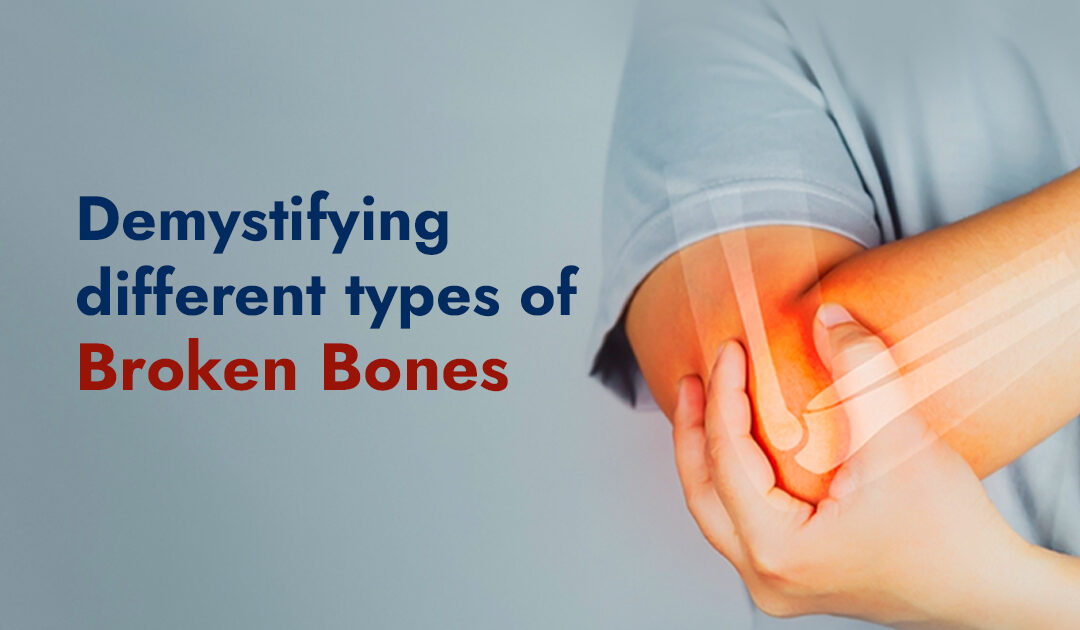Our bodies are supported and given structure by our network of lightweight, powerful bones. But fractures, often called shattered bones, can occasionally result from mishaps, falls, and other stressors. Even though the idea of a broken bone may appear simple, there is a surprising variety of fracture forms and healing times.
A fracture happens when a bone is subjected to more force than it can handle, which breaks or cracks the bone’s structural integrity. Simple hairline cracks to full breaks with dislodged bone fragments are examples of fractures.
These are some essential terms to comprehend:
- Closed fracture: There is no skin piercing from the shattered bone.
- Open fracture: Also known as a complex fracture, this type of fracture increases the risk of infection since the shattered bone protrudes through the skin.
- Fracture that has been displaced: The broken bone pieces are out of place.
- Non-displaced fracture: The broken bone pieces stay where they should be.
Common Fracture Types
A number of variables can affect the kind of fracture you may sustain, such as the force of impact, the kind of bone, and the quality of the underlying bone structure. Here are a few examples of typical fracture types:
- Transverse fracture: A straight break that occurs throughout the bone’s breadth.
- An oblique fracture is a break that happens across the bone diagonally.
- A comminuted fracture is a break in the bone that breaks into several fragments.
- Avulsion fracture: A ligament or tendon pulls a little piece of bone away.
- A tiny hairline crack brought on by repeated tension, and stress fractures are frequently observed in athletes.
- Greenstick fracture: An incomplete break that frequently occurs in kids because of their softer bones.
Cause of Fractures
There are several causes of fractures, including:
- Falls: A major factor in fractures, particularly in young children and older individuals.
- Accidents: Fractures can result from high-impact incidents like as auto accidents and sports injuries.
- Trauma: Bone fractures can result from direct hits to the bone.
- Osteoporosis: This disorder weakens bones, increasing the risk of fractures from even little falls.
- Overuse injuries: Stress fractures are a result of repetitive strain on the bones, especially in sportsmen.
Signs of a Fracture
Depending on the kind and extent of the break, a fracture may present with different indications and symptoms. Nonetheless, a few typical signs are as follows:
- The most prevalent symptom is pain, which is frequently characterized as severe or sharp near the fracture site.
- Edema: Around the fracture site, edema and inflammation are frequently observed.
- Bruising: The skin surrounding the fracture may become discolored.
- Deformity: The bone may occasionally appear noticeably misaligned.
- Having trouble moving or bearing weight on the injured limb: Depending on where the fracture is, movement may be painful or restricted.
Treatment options
The type and severity of the break, your age, general health, and the fracture’s location all influence the course of treatment for a fracture. These are a few typical therapy choices:
- Immobilization: In order to promote appropriate bone healing after a fracture, immobilization using a cast, splint, or brace is frequently necessary.
- Reduction: In cases of displaced fractures, the physician may have to reposition the broken bone pieces. Sometimes this can be done closed, meaning no surgery is needed, and other times it might.
- Internal Fixation: To hold the broken bone pieces in place and encourage healing, surgery may occasionally be required to implant plates, screws, or rods.
- Medication: To control discomfort during the healing phase, a prescription for painkillers may be issued.
- Physical therapy: Regaining strength, flexibility, and range of motion in the affected area can be aided by physical therapy exercises once the cast or brace is removed.
Stress Fractures
What: Tiny cracks in weight-bearing bones.
Cause: Repetitive force, or overuse, especially in running or jumping. Also in individuals with weakened bones.
Common in lower leg and foot.
High risk in track athletes and military recruits.
Shoulder Injuries
What: Damage mostly to the muscles, ligaments, and tendons of the shoulder. Possibility of fractures in shoulder bones.
Cause: Repetitive, overhead motion in sports like swimming, tennis, and weightlifting.
Symptoms: Steady pain, arm weakness, limited joint motion.
Hamstring Injuries
What: Strain or tear in tendons/muscles at the back of the thigh.
Severity:
Grade 1: Mild pull.
Grade 2: Partial tear.
Grade 3: Complete tear.
Cause: Sudden, powerful movements like sprinting, lunging, or jumping.
Concussions
What: Traumatic brain injury affecting brain function.
Cause: Blows to the head or violent shaking.
Symptoms: Headaches, concentration issues, memory loss, balance/coordination problems.
Most recover fully.
Achilles Tendonitis
What: Overuse injury of the Achilles tendon connecting calf muscles to heel.
Common in runners or occasional middle-aged athletes.
Treatment: At-home care, prevention strategies.
Severe cases may need surgical repair.

